Posted by
Susan Sharma
on
January 24, 2007

Frequently overshadowed by bigger, better known inhabitants of India’s jungles, such as the tiger, elephant and leopard, little is known about the clouded leopard. . A smaller member of the “big cat” group, this creature, weighing between 11kg and 20 kg,
is found in the jungles of north Bengal, Arunachal Pradesh and Meghalaya as well as China and parts of south east Asia.
Neora Valley National Park in Darjeeling has begun its first survey of the clouded leopard in an attempt to find out more about this elusive, endangered species. The survey hopes to find out the estimated clouded leopard population of the park, as well as observing
daytime and nocturnal behaviour and its prey base.
The year-long study, jointly carried out by the state forest department and Nature Environment and Wildlife Society (NEWS), a voluntary organisation, will also look at eco-tourism prospects in the park. The 88 square kilometre park is also home to the endangered
red panda and musk deer. Other species include leopard, five species of civet, black bear, sloth bear, golden cat, wild boar, barking deer, sambar, Himalayan flying squirrel and Thar.
SOURCE : The Statesman, Friday, January 19, 2007
|
Posted by
Susan Sharma
on
January 22, 2007

Social and environmental film makers all over the world are, generally speaking, a much troubled lot on the financial front. What keeps them going, more than anything else, is their commitment to the cause.
Unfortunately, these thought provoking films rarely get audiences as they face a challenge of distribution. Television channels either do not run them or, if they do, there is no guarantee of attracting enough eyeballs.
Screening at the workplace
Organizations would do well to screen such films in their workplaces. There are many ways to do this including:
- Television screens that are sometimes installed in offices.
- Create a kind of a You Tube on the intranet so staff can watch these on their desks itself.
- Collective Screening: Call staff in groups to a common room, and screen for them. No doubt people watching in a group would be impacted more as they would have a chance to discuss the same with one another, then and later too.
- Distribute discs: Get multiple copies of such films on suitable discs and distribute them amongst staff.
- Go a step further. Start giving these to customers who make a certain minimum purchase from you. Why give a free soap with a shampoo? Give a film.
|
Posted by
Susan Sharma
on
January 22, 2007
Roots and Shoots
I had the privilege of listening to Jane Goodall at the Brish Council on 21 Jan 2007, while she was addressing the audience of "Wildscreen India".
Jane Goodall is intenationally known as the saviour of chimpanzees. But it was indeed more thrilling to listen to her enthusiasm for the "Roots and Shoots" program she has initiated in 100 countries and is soon starting in India too.
Roots and Shoots of plants have the uncanny ability to pierce/sprout through brick walls. She believes that the brick wall of unsustainable development/global warming will have roots and shoots growing all over soon - roots and shoots being the young workers
she is organizing into groups of grassroot workers from all corners of the world.
The youth of today and even senior citizens can be mobilised for action and they are our "Reason for Hope"
Do visit the site http://www.rootsandshoots.org for more info.
|
Posted by
Susan Sharma
on
January 14, 2007

Sanjay Gandhi National Park, Mumbai-A report
By Sushant Sharma, Member, IndianWildlifeClub.com
sushant01@hotmail.com
After reading about the plight of Borivili (East) hills, Mumbai, I decided to visit the West side of Borivili Hills whch is also known as Sanjay Gandhi National
Park. The park is described as the Green Lung of Mumbai and treks and trails criss cross the park.
At the gate we were told that there is no arrangement for any kind of transport to Kanheri caves. We can walk if we wish. And walk we did. The trails along
the monorail track were littered with waste and human excreta. We had to watch each step. But soon the overpowering stench was so unbearable that all we wanted to do was return to the clean air of Mumbai.
Here are some pictures of the Park which I took. They tell a story which do not need any words.
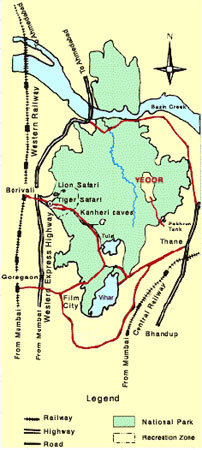
Map of SGNP taken from their official site
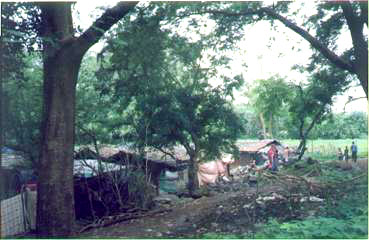
Houses within the national park
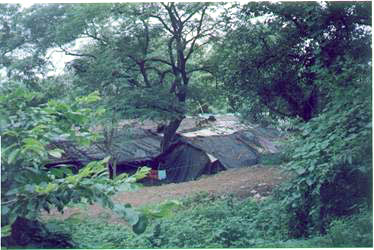
More houses
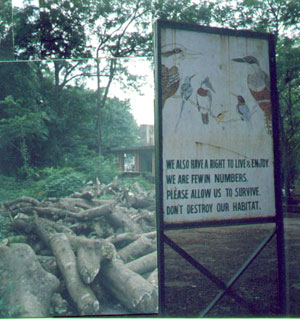
Next to a heap of trees cut down (by who?), the board with bird pics proclaim
"We also have a right to live and enjoy. We are few in numbers. Please allow us to survive. Don't destroy our habitat."
|
Posted by
Susan Sharma
on
January 14, 2007

|
Kedarnath Wildlife Sanctuary-Home to the Himalayan Monal
The beautiful dancing peacock has been an inspiration to all Indians to aspire for beauty and dignity. On one of my visits to Himachal Pradesh I visited the pheasantry at Sarahan where I saw the other relatives of the peacock-lesser known members of the pheasant
family. The Himalayan Monal with the stern and clever look and a rainbow on its tail feathers left a lasting impression.
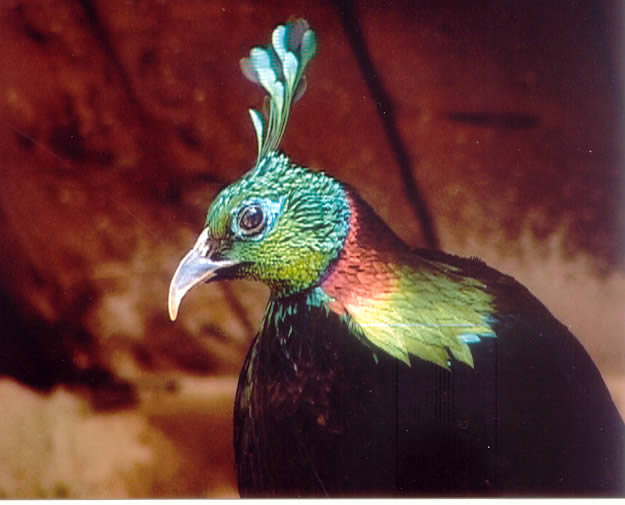
Both my husband and I are happiest when out in the wilderness and before long we were planning a trip to Kedarnath Wildlife Sanctuary, in Uttaranchal India, which is the home of the Himalayan Monal.
We travelled by road, driving from Delhi to Rishikesh on the first day. After halting at Rudraprayag, we proceeded the next day to Chopta via Mandal and Gopeshwar. Once in Chopta, you already soak in the mountains of KedarNath Wildlife Sanctuary.

The forests of Kedarnath Sanctuary is the catchment area of Alaknanda River. The forests comprise a Musk Deer Sanctuary and also reserve forests where villages exist, supporting reasonable good forests where one can hear the call of the koklass pheasant and
monals early in the morning. Sighting monals is not that easy as these birds are extremely shy and vary of human presence.
From Chopta you can take up the bridle path to Tungnath temple (trek/horse) –about 5 km-and you will flush monal enroute.
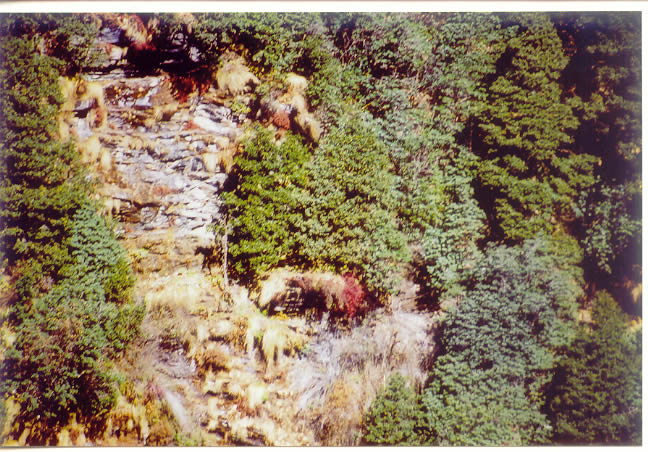
The peaks of Kedarnath which can be reached after a 14km trek, transport one to a heightened spiritual experience. It is no wonder that the majority of Indians who trek these mountainous routes or ride up the bridle path are seeking spiritual fulfillment. The
peak “Kedarnath” is believed to be the abode of Lord Shiva.

This biological reserve of Kedarnath Wildlife Sancuary is 975 Square Kilometer in area. It is home to a number of endangered animals such as Musk deer, Himalayan tahr, Serow and Pheasants. The sanctuary is part of the Garhwal Himalayas.
The vegetation is diverse and most of the forest types are sub-tropical, temperate, sub alpine and alpine. The undulating terrain ranges from about 1700’( 518m) to 22,901’(6980m).
From Tungnath you could take another bridle path to Shokharkh - a less used path in forests but lots of chances to flush monals and observe them. You will have a good sightings of kalij along the motor road above Mandal and definetly hear Koklass pheasant at
Shokharkh.
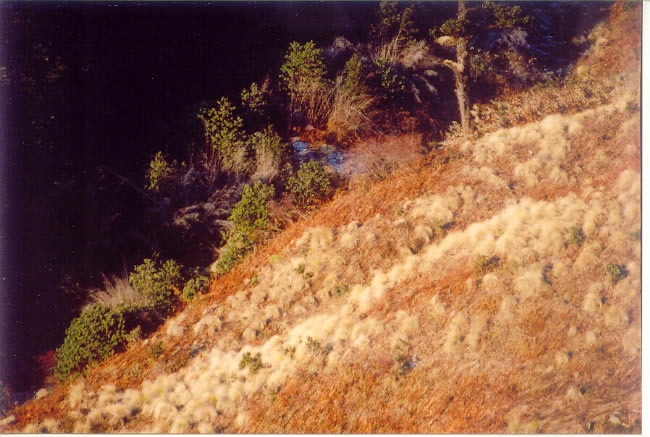
Photographs by Shashi and Susan Sharma:
From top :
1. Head of Himalayan Monal Pheasant
2. Garhwal Himalayan peaks from Chopta
3. Vegetation of the sanctuary
4. Kedarnath Peaks at sunset
5. Undulating terrains which are monal habitat
(More photographs of Kedarnath Wildlife Sanctuary appear at "Wildscapes.net |
|
Posted by
Susan Sharma
on
January 12, 2007
Poachers in Panna targeted the wildlife to celebrate the new year and killed dozens of animals. Most hit were the bucks. It is learnt, in Umaria beat an incident of killing of bucks came into light after publishing the news in Central Chronicle newspaper.
Three youths of Khajuri village killed buck in jungle and distributed its meat among themselves and celebrated with family members. The forest officials raided Khajuri village and found three youths indulging in hunting. The accused accepted their crime.
The forest officials then took the three youths, residents of Khajuri in jungles where they found hides of bucks hid near a tree. The officials then recovered the hides.
The forest officials recovered two axes and hoof of buck. The accused have been arrested under sections 691/12 dated 3/1/07 and sent to the court on remand.
SOURCE : Central Chronicle, Saturday, January 6, 2007
|
Posted by
Susan Sharma
on
January 12, 2007
A scientific study conducted by an Asiatic elephant expert from the Indian Institute of Science, Bangalore, has concluded that RCC walls should be built in certain areas and elephants be relocated to the Nagarahole
National Park in some other areas. Elephants in certain other areas in Kodagu should be scared away back to the forests.
Measures such as elephant proof trenches and solar fencing had failed, the Virajpet Deputy Conservator of Forests Mr. Kalappa said. RCC wall constructions were being taken up on an experimental basis in Mysore
and Chamrajanagar, he said.
|
Posted by
Susan Sharma
on
January 11, 2007

Following efforts that lasted for over five years, the first white-backed vulture baby was born at the Haryana-based Vulture Conservation Breeding Centre (VCBC), run by the Bombay Natural History Society (BNHS)
and Haryana’s Forest department at Pinjore, on January 1. "This is the most precious new year gift from nature to the vulture conservation efforts," Dr Vibhu Prakash, principal scientist and head of Vulture Conservation Breeding Programme in India, said here
on Monday.
"In the wild, the incubation period is about 55 days. However, in the VCBC the egg hatched in about 54 days. The eggs were laid in November 2006," Dr Prakash said.
“We will have to be quick in effectively implementing the ban on the killer drug Diclofenac to assure a better future to this newborn vulture," Dr Asad Rahmani, Director BNHS said.
"The Conservation Breeding Programme is the only hope for recovery of vultures. We aim at releasing 100 pairs of the three critically endangered vulture species to repopulate the wild population. The killer
drug Diclofenac has to be wiped off before the release of vultures," Dr Rahmani added.
Long considered nature’s most efficient scavengers, vultures are on the verge of extinction. Nine species of vultures are recorded from the Indian subcontinent, of which the White-backed vulture Gyps bengalensis,
Long-billed vulture Gyps indicus and Slender-billed Gyps tenuerostris vultures were by far the most populous species in India. Over the last decade, however, there has been a drastic crash in the population of these vultures in most parts of the country. The
rapid vulture population decline was first taken cognisance by the BNHS.
Ornithologists initially felt that there might be a variety of reasons for the decline in vulture population. However, in May 2003, they - after marked research - attributed the decline to a commonly used non-steroidal
anti-inflammatory veterinary drug, Diclofenac, which is used as a painkiller for the livestock. If the animal dies during or after treatment of this painkiller, and if vulture feeds on the carcass, Diclofenac enters into the vulture’s body. The vulture gradually
dies because of kidney failure. Therefore, unless this killer drug is withdrawn from the system with strict implementation of the ban, there is no hope for vultures to be released in the wild from the conservation breeding centres, point out ornithologists
engaged in the project.
The Vulture Conservation Breeding Programme of the Bombay Natural History Society is supported by the Ministry of Environment and Forests, Government of India, the Darwin Initiative for the survival of species,
UK, the Royal Society for Protection of Birds (RSPB) of UK, Zoological Survey of London (ZSL), UK, and the State Governments of Haryana, West Bengal and Assam.
|
Posted by
Susan Sharma
on
January 11, 2007

Wildlife officials are all set to start breeding of the endangered species Mouse Deer, also known as `Spotted Indian Chevrotain’, at Nehru Zoological Park, which is fast becoming a major centre for breeding
of endangered species using technology.
Sporting a brown colour speckled with white markings, the Chevrotain is a nocturnal animal and is considered to be very timid, which vanishes into dense vegetation at the least hint of danger. Chevrotains basically
are very shy creatures and because of this, officials point out that it is difficult to study and observe them in the wild. The diet of Chevrotain is quite varied and includes both plants and sometimes even small animals.
Acting on a proposal sent by zoo officials, Central Zoo Authority (CZA) recently agreed to allow breeding of Chevrotain at the zoo. The zoo officials had cited the success of raising a healthy spotted deer
by artificial insemination in collaboration with researchers of Centre for Cellular and Molecular Biology. "Very soon special enclosures would be constructed for the Mouse Deer at the zoological park.
The zoo has eight Mouse Deer now and they are hoping that the numbers would be just enough to start the project. CZA has agreed to fund this project.
|
Posted by
aditya
on
January 03, 2007
Plz inform me what is record size of red sand boa!
|